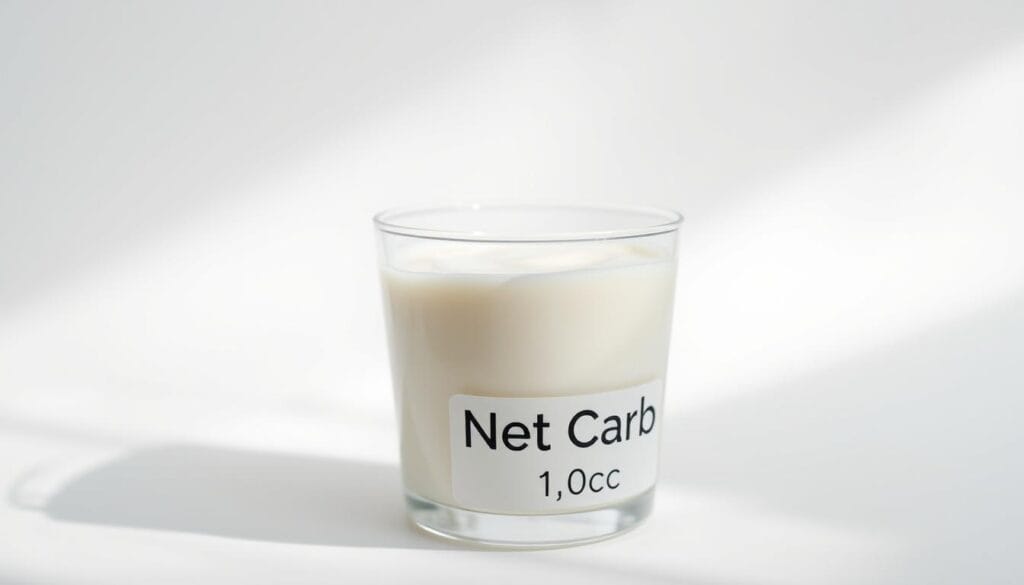How To Use Yogurt In Keto Diet Successfully
Did you know that nearly 13% of Americans follow a low-carb eating plan? Among them, many struggle to balance flavor and nutrition while staying in ketosis. The right food choices make all the difference—especially when it comes to creamy, protein-packed options like yogurt.
Though some varieties contain carbs, strategic selection lets you enjoy its benefits without breaking ketosis. Rich in probiotics and healthy fats, it supports digestion and energy levels. Plus, its versatility makes it perfect for quick meals or snacks.
This guide covers the best types to pick, carb management tips, and simple recipes. You’ll learn how to incorporate it smartly for maximum health perks. Ready to make every spoonful count?
Table of Contents
Understanding Yogurt and the Keto Diet
Balancing flavor and nutrition while maintaining ketosis can be tricky, but yogurt offers a surprising solution. Its creamy texture and probiotic benefits make it a standout choice—if you pick wisely. Here’s how to navigate its place in a low-carb lifestyle.
Why Yogurt Works for Keto
Full-fat varieties align perfectly with the ketogenic diet’s high-fat requirements. Fermentation reduces lactose content, lowering carbs while boosting gut-friendly bacteria. *Plain Greek yogurt*, for example, packs more protein and fewer sugars than regular versions.
“Dairy products like yogurt are linked to a 14% lower risk of heart disease, making them a smart addition to balanced diets.”
Challenges to Consider
Not all options are equal. Flavored yogurts often hide added sugars that disrupt ketosis. Even natural lactose breaks down into glucose, so portion control is key. Compare these popular choices:
| Type (6oz serving) | Total Carbs | Net Carbs |
|---|---|---|
| Plain Greek yogurt | 7g | 5g |
| Regular yogurt | 8g | 6g |
| Flavored yogurt | 20g+ | 18g+ |
Stick to plain Greek or full-fat versions to stay within the keto limit of 20–50g daily carbs. Measure servings to avoid accidental overconsumption.
Nutritional Profile of Yogurt for Keto
Understanding the nutritional breakdown helps you make smarter dairy choices. Not all options support ketosis equally—focus on carbs, fat, and protein ratios to stay on track.
Carbs in Yogurt: Net Carbs vs. Total Carbs
Net carbs (total carbs minus fiber) determine keto compatibility. For example, 6oz of plain whole-milk yogurt has 8g total carbs but negligible fiber, so all count toward your daily limit. Greek versions often have fewer digestible carbs due to straining.

Fat and Protein Content in Keto-Friendly Yogurt
Full-fat dairy delivers satiety and aligns with keto macros. Compare these 6oz servings:
| Type | Fat (grams) | Protein (grams) |
|---|---|---|
| Plain Greek | 5.5g | 15g |
| Regular Whole Milk | 5.5g | 6g |
| Low-Fat (Avoid) | 2g | 6g |
Greek yogurt’s higher protein keeps you full longer, while low-fat options often replace fat with added sugars.
Key Nutrients in Yogurt
Beyond macros, it’s rich in calcium for bones and riboflavin for energy. Probiotics in fermented dairy also support gut health. Just prioritize plain, full-fat versions to maximize nutrition without excess carbs.
Best Types of Yogurt for a Keto Diet
Not all creamy delights fit a carb-conscious lifestyle—here’s how to pick wisely. Focus on options rich in *healthy fats* and low in *added sugars* to stay in ketosis. Below, we break down the top choices.
Plain Greek Yogurt: The Top Choice
Greek yogurt wins for its high protein and low *carb count*. A 6oz serving of *plain Greek* packs 15g protein and just 5g net carbs. Brands like Fage Total or Siggi’s use minimal ingredients, avoiding sneaky sugars.
Its thick texture comes from straining, which removes excess lactose. This makes it ideal for savory dips or protein-packed breakfasts.
Full-Fat Plain Yogurt: A Creamy Option
For those who prefer milder flavors, *plain yogurt* made with whole *milk* delivers creaminess without excess carbs. A study links full-fat *dairy* to a 14% lower heart disease risk.
“Full-fat dairy products provide satiety and essential nutrients without spiking blood sugar.”
Compare labels—avoid versions with gelatin or thickeners that add hidden carbs.
Dairy-Free Alternatives: Coconut and Almond Milk Yogurt
Plant-based options like *coconut milk yogurt* (10g carbs/170g) suit lactose-free diets. So Delicious Unsweetened is a standout, but check *carb count*—some almond *milk* versions sneak in sweeteners.
Oat-based yogurts are higher in carbs, making them less keto-friendly. Stick to unsweetened varieties for the best results.
| Type (6oz) | Net Carbs | Protein |
|---|---|---|
| Plain Greek | 5g | 15g |
| Full-Fat Plain | 6g | 6g |
| Coconut Milk | 8g | 1g |
Pro tip: Pair with nuts or seeds to balance macros and add crunch.
How to Choose the Right Yogurt for Keto
Smart label reading is your secret weapon for staying in ketosis. Flavored varieties often pack 20g+ sugars per serving—enough to disrupt fat adaptation. Focus on plain, full-fat options to maximize nutrition without the carb overload.

Reading Labels: Avoiding Added Sugars
Always check the added sugars line—even “healthy” brands sneak in sweeteners. Words like “organic cane syrup” or “fruit concentrate” signal hidden carbs. Plain Greek yogurt is safest, with just 5g net carbs per 6oz.
Use apps like Carb Manager to scan barcodes instantly. Compare brands to find the lowest carb count. For example:
- Fage Total 5%: 5g carbs, 15g protein
- Siggi’s Whole Milk: 4g carbs, 11g protein
Portion Control: Staying Within Carb Limits
A keto-friendly serving is typically ½ cup (about the size of a tennis ball). Weighing portions ensures accuracy—a kitchen scale beats eyeballing. Balance your day’s net carbs by pairing yogurt with low-carb foods like nuts or chia seeds.
“Precision matters. Overeating ‘healthy’ yogurt by just ½ cup could add 10g unwanted carbs.”
For visual learners:
| Portion Guide | Net Carbs |
|---|---|
| ¼ cup (2oz) | 2.5g |
| ½ cup (4oz) | 5g |
| ¾ cup (6oz) | 7.5g |
Delicious Keto Yogurt Recipes
Craving a creamy, satisfying snack that fits your low-carb lifestyle? These recipes blend flavor and nutrition effortlessly. Each dish balances healthy fats, protein, and gut-friendly probiotics.
Protein-Packed Yogurt Bowl
Wholesome Yum’s classic combines ½ cup plain Greek yogurt with:
- 1 tbsp hemp hearts (3g protein)
- ¼ cup raspberries (1.5g net carbs)
- 1 tsp chia seeds (5g fiber)
Macros per serving: 220 kcal, 12g fat, 8g net carbs, 18g protein.
Low-Carb Yogurt with Nuts and Seeds
Crunchy textures elevate a simple base. Try these combos:
| Toppings (1 tbsp) | Net Carbs |
|---|---|
| Almonds | 1g |
| Pumpkin seeds | 1.5g |
| Unsweetened coconut flakes | 2g |
“Pre-portion toppings in jars for grab-and-go convenience.”
Homemade Yogurt with Probiotics
For a dairy-free version, blend:
- 1 can coconut milk (full-fat)
- 2 probiotic capsules
- 1 tsp gelatin (for thickness)
Ferment 24 hours. Per ½ cup: 180 kcal, 17g fat, 3g net carbs.
Pair these recipes with nuts or berries for a balanced bite.
Health Benefits of Yogurt in a Keto Diet
Adding the right dairy to your low-carb routine offers more than just taste. It delivers powerful health benefits that support your body’s needs. From gut healing to steady energy, here’s how it enhances your wellness journey.
Gut Health and Probiotics
Fermented food like plain Greek yogurt contains live cultures that boost digestion. These probiotics reduce inflammation and improve nutrient absorption. Studies link them to a stronger immune system and better mental clarity.
Regular consumption may lower bloating and support a balanced microbiome. Pair it with fiber-rich chia seeds for even better results.
Weight Loss and Satiety
The protein and fat combo keeps hunger at bay for hours. Research shows conjugated linoleic acid (CLA) in full-fat dairy aids weight loss by targeting stubborn belly fat.
“High-protein snacks like yogurt reduce cravings by 60% compared to carb-heavy options.”
Measure portions to stay within your daily macros while enjoying its filling effects.
Blood Sugar Control
Unlike sugary snacks, plain yogurt has a minimal impact on blood sugar. Its low glycemic index makes it ideal for maintaining steady energy levels. A study found fermented dairy lowers type 2 diabetes risk by 14%.
For extra benefits, try adding cinnamon—it enhances flavor while stabilizing glucose.
| Benefit | Key Factor |
|---|---|
| Gut Health | Probiotics |
| Weight Management | High Protein/Fat |
| Metabolic Support | Low Glycemic Impact |
Conclusion
Making smart dairy choices keeps your low-carb journey flavorful and effective. Plain Greek yogurt stands out as a nutrient-dense food, offering probiotics and protein without excess carbs.
Stick to full-fat, unsweetened varieties to maximize health benefits. Experiment with recipes—pair it with nuts or Chomps meat sticks for a balanced snack.
Always track net carbs to stay on track. With the right picks, you’ll enjoy creamy satisfaction while nailing your keto goals.
FAQ
Can you eat yogurt on a keto diet?
Yes, but choose wisely. Plain Greek and full-fat options with low net carbs fit best. Avoid sugary varieties.
What yogurt has the lowest carbs for keto?
Plain Greek yogurt typically has the fewest net carbs (around 4g per 100g). Always check labels for exact counts.
How does yogurt support gut health on keto?
It contains probiotics, which aid digestion. These live cultures balance gut bacteria, especially helpful when cutting high-carb foods.
Are dairy-free yogurts keto-friendly?
Some are. Unsweetened coconut or almond milk yogurts work, but watch for added sugars and starches that spike carbs.
What’s a good keto yogurt portion size?
Stick to ½ cup (100–120g) to stay within carb limits. Pair with nuts or seeds for extra healthy fats.
Does yogurt help with weight loss on keto?
Yes! Its protein and fat boost satiety, reducing cravings. Opt for high-fat versions to align with ketosis.
How can I make keto yogurt at home?
Use full-fat milk and a starter culture. Ferment for 8–12 hours—no added sugars. Strain for thicker texture if desired.

